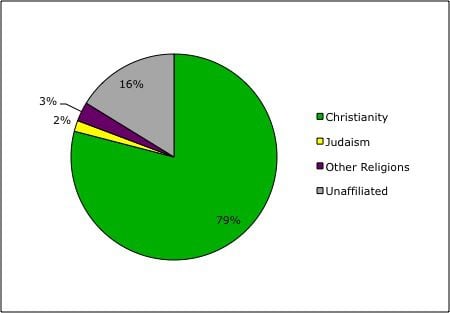Religion 101
Question: What do Roman Catholics, Greek Orthodox, Russian Orthodox, Baptists, Methodists, Lutherans, Presbyterians, Episcopalians, Jehovah’s Witnesses, Seventh-Day Adventists, Amish, Mennonites, Quakers, Pentecostals, charismatics, evangelicals, fundamentalists and “non-denominationals” all have in common? Answer: they’re all “Christians.” Christianity is the largest religion in the world. Christians account for about 32% of the total global population, and about…
